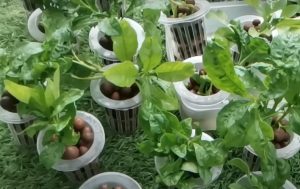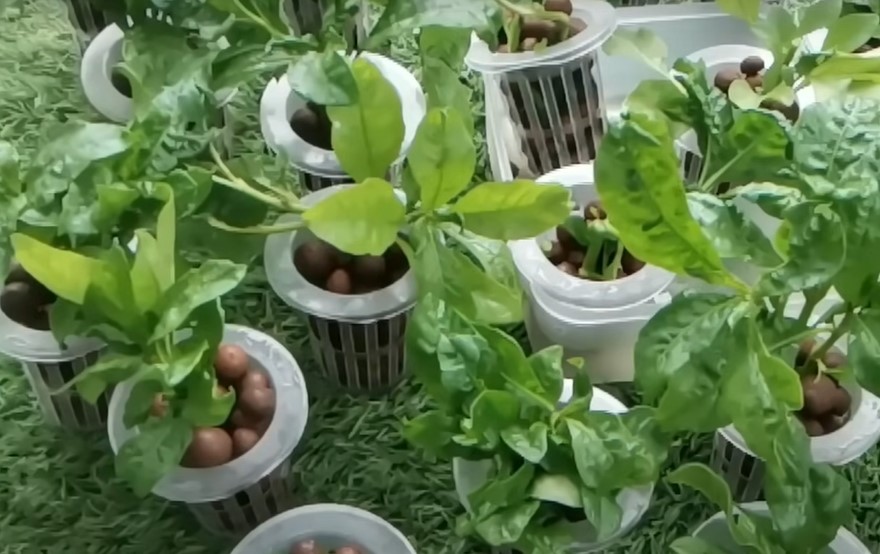
Hydroponic gardening is an exciting way to grow plants without soil, using just water mixed with essential nutrients. It’s perfect for people who want fresh vegetables, herbs, or flowers at home, even in small spaces. Hydroponics makes gardening easier, more efficient, and more accessible, as it can be done indoors or outdoors.
Let’s dive into how hydroponic gardening works, how to set up your own system, and what makes it an ideal choice for anyone looking to grow their own fresh produce.
What is Hydroponic Gardening?
Hydroponic gardening is a technique of growing plants using nutrient-enriched water instead of soil. Plants grow in containers or trays, and their roots are directly exposed to a nutrient solution. This method allows plants to absorb nutrients faster, leading to quicker growth and often healthier plants.
Benefits of Hydroponic Gardening
1. Space Efficiency: You don’t need a big backyard for hydroponics. You can grow plants on a balcony, kitchen counter, or in a small corner of your home.
2. Faster Growth: Since the roots directly absorb nutrients, plants can grow up to 50% faster than traditional soil gardening.
3. Less Water Usage: Hydroponics uses less water than soil gardening because the water can be reused within the system, which is great for water conservation.
4. Year-Round Gardening: Hydroponics allows you to grow plants indoors year-round, regardless of the season.
5. Pest Control: Without soil, there are fewer issues with soil-borne pests, which means fewer pesticides and healthier plants.
Types of Hydroponic Systems for Beginners
Here are some popular hydroponic systems you can try at home:
1. Nutrient Film Technique (NFT): In this system, a shallow stream of water containing nutrients flows over the roots of the plants, which sit in a grow tray. It’s great for growing leafy greens like lettuce.
2. Deep Water Culture (DWC): In a DWC system, plant roots are suspended in oxygenated water containing nutrients. This method is ideal for beginners as it’s low-cost and easy to set up.
3. Wicking System: This simple method involves a wick, like a cotton rope, that draws nutrient-rich water up to the plant roots. It’s easy to build at home and doesn’t require any pumps or electricity.
4. Ebb and Flow System: Also called the flood and drain system, this setup floods the roots with nutrient solution at specific intervals and then drains it. It’s great for plants that need a bit of a dry period between waterings.
5. Drip System: In this setup, nutrient solution drips slowly onto the base of each plant. It’s suitable for larger plants like tomatoes or peppers and is easy to control.
Getting Started with a DIY Hydroponic Garden
Step 1: Choose a Suitable Location
Find a spot in your home with access to sunlight or use grow lights if indoors. A sunny windowsill, balcony, or well-lit room will work well.
Step 2: Gather Your Materials
For a basic hydroponic setup, you’ll need:
– A container(for holding water and nutrients),
– Growing medium (like clay pellets or coconut coir),
– Net pots (to hold plants),
– Nutrient solution (available at gardening stores),
– Water pump and air pump(for circulating water and oxygen in some systems),
– pH testing kit (optional but helpful for monitoring nutrient solution).
Step 3: Set Up Your System
– Fill the container with the nutrient solution, ensuring the pH is in the right range for your plants (usually between 5.5 to 6.5).
– Insert the plants in net pots with a growing medium, placing them in a way that the roots can reach the nutrient solution.
– For systems like DWC, use an air pump to oxygenate the water.
Step 4: Add Your Plants
Choose plants that are well-suited for hydroponics, such as leafy greens (lettuce, spinach), herbs (basil, mint), or small fruiting plants (strawberries, tomatoes).
Step 5: Monitor and Adjust
Keep an eye on your plants, checking the water level, nutrient concentration, and pH regularly. Refill the nutrient solution as needed and replace it every 2-4 weeks.
Common Mistakes to Avoid
1. Ignoring pH Levels: Hydroponic plants require a stable pH level to absorb nutrients effectively. Use a pH tester to keep it within the ideal range.
2. Overfeeding or Underfeeding: It’s easy to think “more nutrients mean faster growth,” but overfeeding can harm plants. Stick to the recommended concentration on nutrient labels.
3. Lack of Light: Plants need plenty of light to grow well. If you’re growing indoors, invest in grow lights, especially for leafy greens and fruiting plants.
4. Not Enough Oxygen in Water: Without soil, plant roots can suffocate in water if there’s not enough oxygen. Systems like DWC benefit from air stones or pumps to keep water oxygenated.
Plants Ideal for Home Hydroponics
1. Lettuce and Spinach: These leafy greens are fast-growing and don’t require much space or nutrients.
2. Basil and Mint: These herbs thrive in hydroponic setups and are perfect for adding fresh flavors to your meals.
3. Strawberries: A bit more advanced, but with proper care, strawberries can flourish in a hydroponic garden.
4. Cherry Tomatoes: These are small and manageable for indoor hydroponic systems, adding fresh taste to salads and dishes.
Tips for Success in Hydroponic Gardening
1. Experiment with Different Plants: Start with easy plants like herbs or lettuce, and as you gain confidence, try more challenging plants like peppers or cucumbers.
2. Track Growth and Make Adjustments: Keep a simple log of what works and what doesn’t. Note the nutrient amounts, light duration, and pH levels for future reference.
3. Be Patient: Hydroponic gardening is a learning experience. You might not get it perfect the first time, but each attempt brings you closer to mastering the process.
Conclusion
Hydroponic gardening at home is a rewarding, eco-friendly way to grow fresh produce without soil, making it perfect for small spaces or indoor growing. It’s beginner-friendly, scalable, and can bring fresh, nutritious food right to your home, even if you live in a city apartment. With a bit of care, patience, and experimentation, hydroponics can become a fun and sustainable way to enjoy gardening year-round.
Happy growing! 🌱
